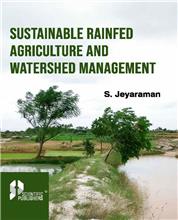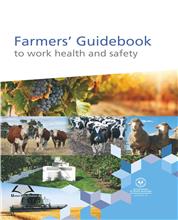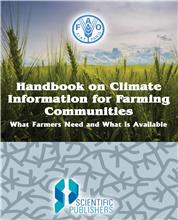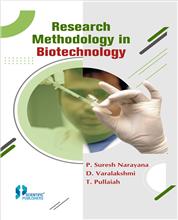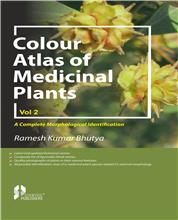1 .Soils of Arid And Semi-Arid Regions
1.1 Calcareous Soils
1.2 Gypsiferous Soils
1.3 Salt Affected Soils
2 .Soil Sampling and Preparation
2.1 Soil Sampling Tools
2.2 Sampling for Soil Fertility
Tests
2.2.1 Time of Sampling
2.2.2 Depth of Sampling
2.2.3 Methods of Sampling
2.3 Soil Sampling for Soil Survey
and Classification Studies
2.4 Preparation of Soil Samples
2.5 Grinding and Sieving of Soil
Samples
2.6 Reduction of Sample Size
3 .Soil Moisture
4 .Soil Texture – Particle Size Distribution
4.1 Introduction
4.2 Dispersion
4.3 Sedimentation
4.4 Bouyoucos Method
4.5 Gypsum Removal from Soil
4.5.1 Gypsum Removal by Ammonium
Oxalate
4.5.2 Gypsum Removal by
Hydrochloric Acid
4.5.3 Pretreatment of Soil with
BaCl2 to Coat Gypsum with BaSO4
4.5.4 Pretreatment of Soil with
BaCl2 Solution followed by Ethanol
4.5.5 Pretreatment with BaCl2
Solution (Modified Method)
5 .Soil Density and Total Pore Space
5.1 Introduction
5.2 Measurement of Bulk Density
5.2.1 Bulk Density of a Disturbed
Soil Sample
5.2.2 Bulk Density of an
Undisturbed Soil Sample
5.3 Measurement of Particle
Density
5.3.1 The Graduated Cylinder
Method
5.3.2 The Volumetric Flask Method
5.4 Calculation of Percent Pore
Space
6 .Analysis of Saturation Paste Extract
6.1 Introduction
6.2 Preparation of Saturation
Paste
6.2.1 Calculation of Saturation
Percentage
6.2.2 Determination of Soil pH
6.3 Preparation of Saturation
Extract
6.3.1 Determination of Soil
Salinity (Electric Conductivity)
6.3.2 Determination of Soluble
Sodium and Potassium
6.3.3 Determination of Soluble
Calcium and Magnesium
6.3.4 Determination of Carbonate
and Bicarbonate
6.3.5 Determination of Chloride
7 .Calcium Carbonate
7.1 Determination of Total
Calcium Carbonate
7.2 Determination of Active
Calcium Carbonate
8. Cation Exchange Capacity (CEC)
8.1 Determination of Cation
Exchange Capacity (CEC)
8.2 Determination of CEC in
Gypsiferous and Calcareous Soils
8.3 Exchangeable Sodium
Percentage
9. Soil Gypsum
10. Soil Organic Matter
10.1 Walkley – Black Wet
Combustion Method
11. Soil Nitrogen
11.1 Total Nitrogen (Kjeldahl
method)
11.2 Determination of Mineral
Nitrogen
11.2.1 Determination of Nitrate
by the Phenoldisulfonic Acid Method
11.2.2 Determination of Nitrate
by the Specific Ion Electrode
11.3 Extraction of Exchangeable
Ammonium
11.3.1 Determination of Ammonium
by Indophenol Blue Method
11.3.2 Determination of Ammonium
by Specific Ion Electrode
12. Soil Phosphorous
12.1 Fractionation of Soil
Phosphorous
12.2 Fate of Applied Phosphatic
Fertilizer
12.3 Influence of Soil Parent
Materials on the Distribution of the Inorganic Pfractions
12.4 Phosphorous Retention
12.5 Iron and Aluminium Amorphous
Phosphate in Calcareous Soils
12.6 Determination of Available
Phosphorous (Olsen’s method)
13. Soil Potassium
13.1 Determination of Available
Potassium
13.2 Determination of Fixed
Potassium
14. Soil Sulphur
15. Gypsum Requirement
16. Soil Micronutrients
16.1 Iron, Zinc, Manganese and
Copper
16.1.1 Iron
16.1.2 Zinc
16.1.3 Manganese
16.1.4 Copper
16.2 Determination of Available
Micronutrients
16.2.1 DTPA Extraction Method
16.2.2 Measurement of Element
Concentration Using Atomic Absorption Spectroscopy
16.3 DTPA Extractability and
Availability for Plant Uptake
17. Soil Boron
17.1 Total Boron by Na2CO3 Fusion
17.2 Available Boron by Hot Water
Extraction
17.3 Measurement of Concentration
by Colourimetric Methods
17.3.1 Colour Development –
Carmine Method
17.3.2 Colour Development –
Azomethine-H Method
18. Soil Molybdenum
19. Soil Selenium
20. Potentially
Toxic Elements - CD, CR, NI AND PB
21. Identification Of Clay Minerals By X-Ray Diffraction (XRD)
References
List of Tables
Table 1. Chemical characteristics
of saline, non-saline sodic and saline-sodic soils
Table 2. Electrical conductivity
values for different CaSO4 concentrations in water
Table 3. Effect of pretreatments
on the d-spacing of selected clay minerals
List of Figures
Figure 1. Sampling pattern for
fertility test in a non-uniform land
Figure 2. Sampling-sites selection
methods for fertility test
Figure 3. Field datasheet
Figure 4. Reduction of sample size
by quartering
Figure 5.Datasheet for the recording
of hydrometer readings
Figure 6. Texture triangle showing
the percentages of sand, silt and clay in the textural classes
Figure 7. Modified textural
triangle for determining soil texture by the feel method
Figure 8. Effect of soil: water
ratio and particle size on total gypsum extraction
Figure 9. Identification of
kaolinite using its characteristic XRD patterns
Figure 10. Identification of
smectite using its characteristic XRD patterns
List of Appendices
Appendix A. List of the atomic
weights of the elements
Appendix B. pH indicators
Appendix C. Properties of
laboratory materials
Appendix D. Grades of chemicals
Appendix E . Nutrient range in
soils, mg/kg (Bashour, 2001)
Appendix F. Temperature factors
(ft) for correcting resistance and conductivity data on soil extracts to the standard temperature of 25°C
Appendix G. Conversion factors for
SI and non-SI units (Soil Science Society of America Journal)



